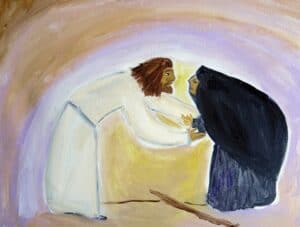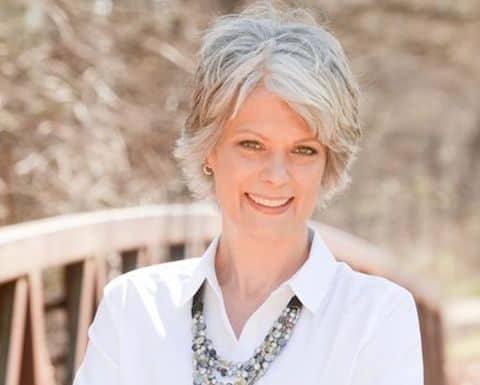She was used to looking at people out of the corner of her eye, looking sideways and looking up.

Eighteen years and she could hardly remember any other way of seeing the world. On this particular Sabbath, there was a lot of excitement at the synagogue. She worshipped in this synagogue regularly. A Galilean preacher and prophet, Jesus of Nazareth, had arrived in town and would be teaching there. All the townspeople had heard reports about Jesus. They heard how he talked about God’s reign arriving soon and how he healed sick people. She heard the rumors to and was not sure how many of the rumors to believe. She was trying not to get her hopes up. Her life had been filled with too many disappointments to count.
As she entered the synagogue, the place was full of excitement. When Jesus began to teach, the room was hushed. As Jesus taught, his words turned from teaching to invitation. He had caught her eye, which was difficult given that he had to lean over to do so. “Come here,” he said to her. So she slowly made her way to the front of the assembly.
The whole congregation was amazed when Jesus said, “Woman, you are set free from your ailment.” When He spoke those words and put his hands on her broken, bent body, she felt His power surge through her. With no hesitation, she straightened her once crooked back. She stood tall and praised her God!
Listening to this story from the perspective of the bent over woman raises questions and new insights. In Luke 13:10-17, emphasis is placed on the healing as the crucial starting point of the story. There is controversy between Jesus and the synagogue leader, but at the core is a healing that demonstrates Jesus’ power and his compassion. We hear the compassion in Jesus’ voice as He defends healing on the Sabbath. He argues if compassion is shown to one’s animals on the Sabbath by providing them water, “ought not this woman, a daughter of Abraham whom Satan bound for eighteen long years, be set free from this bondage on the Sabbath day?” (Luke 13:16). Jesus gives her a “name,” the daughter of Abraham. This name identifies the woman’s membership in the covenant community.
What do we make of the controversy between Jesus and the synagogue leader. He strongly objects to this Sabbath healing? If we told the story from the synagogue leader’s perspective to we might notice a couple of things. First, the synagogue leader’s complaint is seen as a faithful reading of the Torah. The seventh day was set aside by God for Israel’s rest. Work was prohibited on the Sabbath. Secondly, Jesus’ response is not a rejection of the Torah rulings about the Sabbath. Jesus argues from legitimate allowances of restricted kinds of “work” on the Sabbath. This type of discussion was common in Jewish culture regarding the Sabbath. Then Jesus argues for healing on the Sabbath based on the great worth of the woman. She is named as “a daughter of Abraham” and it was appropriate to heal his woman on the Sabbath. What better day to heal than on the Sabbath?
Jesus’ perspective on the Sabbath as a day for deliverance is vindicated in this passage. Luke explains the humiliation of Jesus’ opponents and the joy of the crowds at his wonderful healing of this woman. We do not hear about the woman who has been healed, but at the end of the passage, she offers praise and the crowds rejoice along with her. Luke considers both these themes of rejoicing and praise appropriate responses to God’s work in Jesus. Jesus is the one who brings the reign of God in healing power to those who most need it.
Thanks Be To God!
I encourage you to read Luke 13:10-17 as we prepare to Worship and Praise God on Sunday morning at 11:00 am. We invite you to come join us.
Grace and Peace,
Pastor Nelda
Reverend Dr. Nelda Barrett Murraine is pastor at First United Methodist Church
PO Box 146 – 229 W 4th St. Kennedale, TX 76060





































